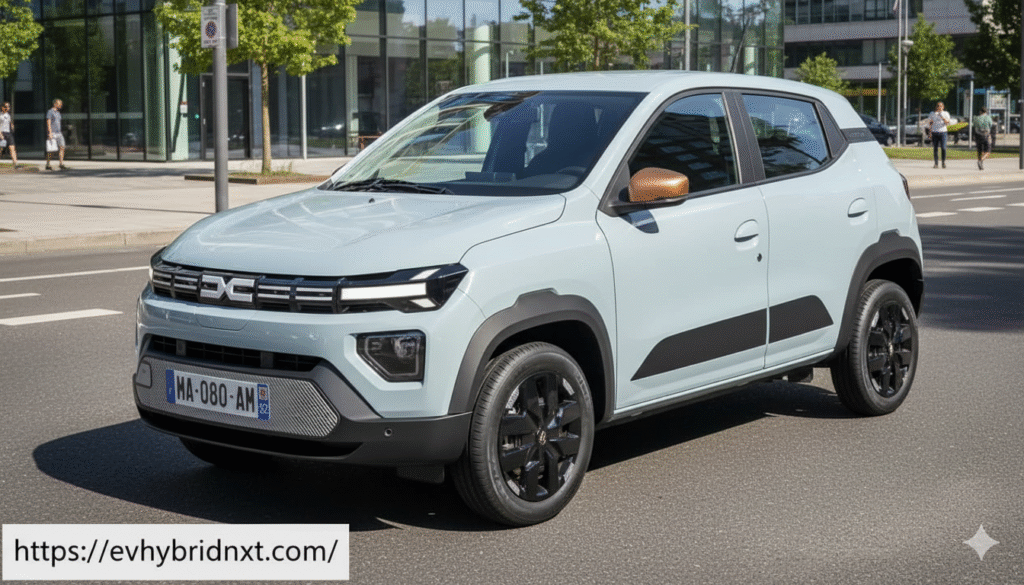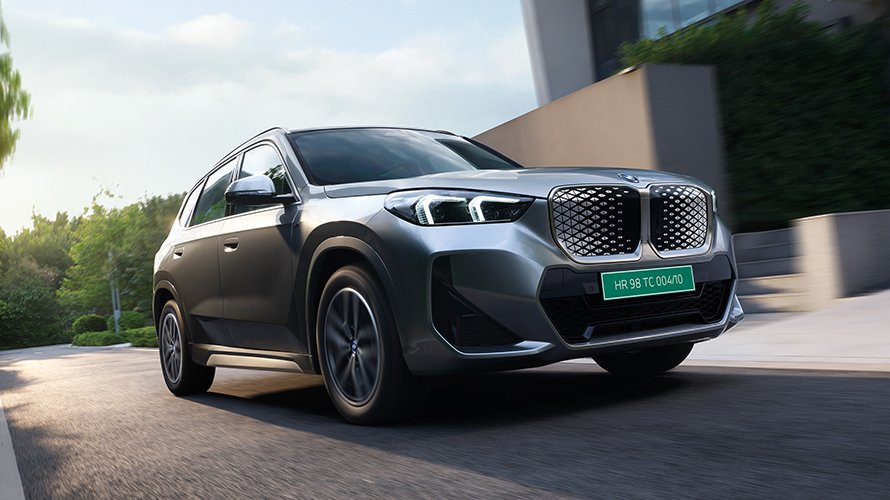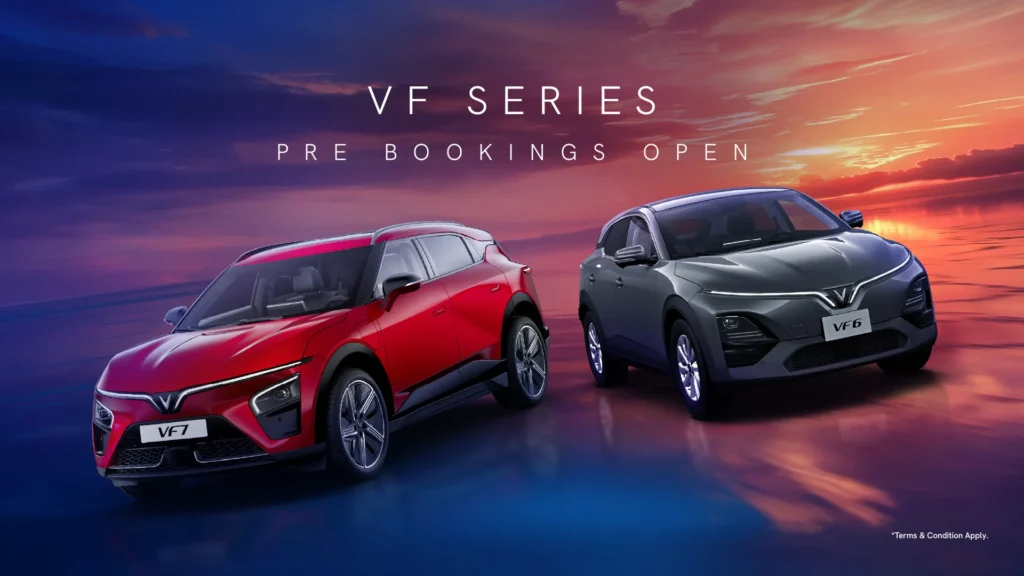The Dacia Spring, Europe’s pint-sized electric city car and a close cousin to the Renault Kwid buzzing through Indian streets, just got a serious glow-up. Announced on October 6, 2025, this latest iteration tackles the original’s biggest gripes—pokey acceleration and sluggish charging—while keeping its wallet-friendly ethos intact. With a new lithium iron phosphate (LFP) battery, beefier motors, and quicker top-ups, the Spring is evolving from a quirky urban shuttle into a more versatile daily driver, all without spiking the price tag.
Priced from €16,900 in markets like France, the entire lineup stays under €20,000, cementing its crown as the continent’s most affordable new EV. Since its 2021 debut, over 179,000 units have rolled off lots across Europe, with more than 17,000 finding homes in 2025 alone—snagging second place in the A- and B-segment retail EV sales. As Chinese rivals like the Leapmotor T03 eye the low-cost throne, Dacia’s tweaks aim to keep the Spring zipping ahead.
Powertrain Punch-Up: From Snail to Sprint
Gone are the days of glacial getaways. The outgoing Spring ’45’ variant lumbered to 100 km/h in a leisurely 26.2 seconds, while the ’65’ managed 14.0 seconds—fine for stoplight sprints but frustrating on open roads. Enter the 2025 duo: the Spring 70 (52 kW/70 hp) and Spring 100 (75 kW/101 hp), both wielding a shared 137 Nm of torque from a refined permanent magnet synchronous motor (PMSM).
These upgrades slash 0-100 km/h times to 10.3 seconds for the 70 and a peppy 6.9 seconds for the 100, with even bigger gains in real-world overtaking: 80-120 km/h now takes just 10.3 seconds on the base model and 6.9 on the top trim. That’s up to 20% more mid-range grunt, making highway merges less of a white-knuckle event. Available on Essential and Expression trims for the 70 hp setup, the 100 hp beast is exclusive to the sportier Extreme variant, complete with copper accents and 15-inch wheels for sharper handling.
Smarter Battery, Swift Charges: LFP Tech Takes Charge
Underpinning the power surge is Dacia’s first LFP battery from the Renault Group—a 24.3 kWh pack that’s tougher on thermal stress, longer-lasting, and cheaper to produce than traditional lithium-ion cells. It props up a WLTP range of 225 km (about 140 miles) on 15-inch wheels, sipping just 12.4 kWh/100 km—enough for a full week’s urban commute (around 170 km at 34 km/h averages) on one charge.
Charging gets a real boost too: The onboard DC fast-charger jumps from 30 kW to 40 kW (optional on higher trims), trimming 20-80% top-ups to 29 minutes at a public station. AC home charging via the standard 7 kW wallbox now fills from 20-100% in 3 hours 20 minutes, down from four hours previously, or a leisurely 10 hours on a domestic socket. These tweaks make the Spring far more “liveable” for folks without dedicated overnight plugs, bridging the gap to rivals with bigger batteries.
Ride and Refinements: Handling That Punches Above Its Weight
Dacia didn’t stop at speed; the Spring’s chassis has been fortified with a beefier central platform for the new battery, better weight distribution, and a standard anti-roll bar across all models. Retuned shocks, springs, and brakes deliver crisper cornering and a planted feel, while aerodynamic tweaks—like revised fairings and a rear spoiler—drop drag by up to 11% (SCx from 0.745 to 0.660). It’s still the lightest four-seater EV at around one tonne, ensuring nimble city maneuvers without guzzling electrons.
Inside, the cabin stays utilitarian yet upgraded: A 7-inch digital cluster is standard, with the Extreme’s 10-inch touchscreen adding wireless Apple CarPlay/Android Auto and optional connected nav. Boot space leads the A-segment at 308 liters (expanding to 1,004 with seats folded), plus clever YouClip mounts for gadgets. Safety basics like rear sensors and cruise control are par for the course, though advanced driver aids remain absent to keep costs low.
Kwid Kin and Broader Appeal: A Blueprint for Affordable EVs?
For Indian readers, the Spring’s DNA hits close to home—it’s essentially a rebadged, electrified Renault Kwid, sharing that boxy charm and no-frills vibe tailored for emerging markets. While the Kwid sticks to petrol in India, whispers of a local EV variant persist, potentially borrowing these very upgrades for a sub-Rs 10 lakh launch.
In Europe, the Spring’s resurgence couldn’t come at a better time. With EV adoption stalling amid subsidy cuts and Chinese imports flooding in, Dacia’s formula—bare-bones reliability wrapped in eco-greens—continues to resonate. Zero tailpipe emissions, rock-bottom running costs (under 2 euros/100 km), and optional vehicle-to-load (V2L) for powering gadgets make it a smart pick for fleet operators and first-time EVers alike.
As deliveries kick off later this year, the 2025 Dacia Spring proves you don’t need a fat wallet for electric fun. It’s not rewriting the performance playbook, but for urban warriors craving simplicity and savings, this feisty frog is hopping higher than ever. If Renault brings it stateside as a Kwid EV, India could be next in line for the jolt.



